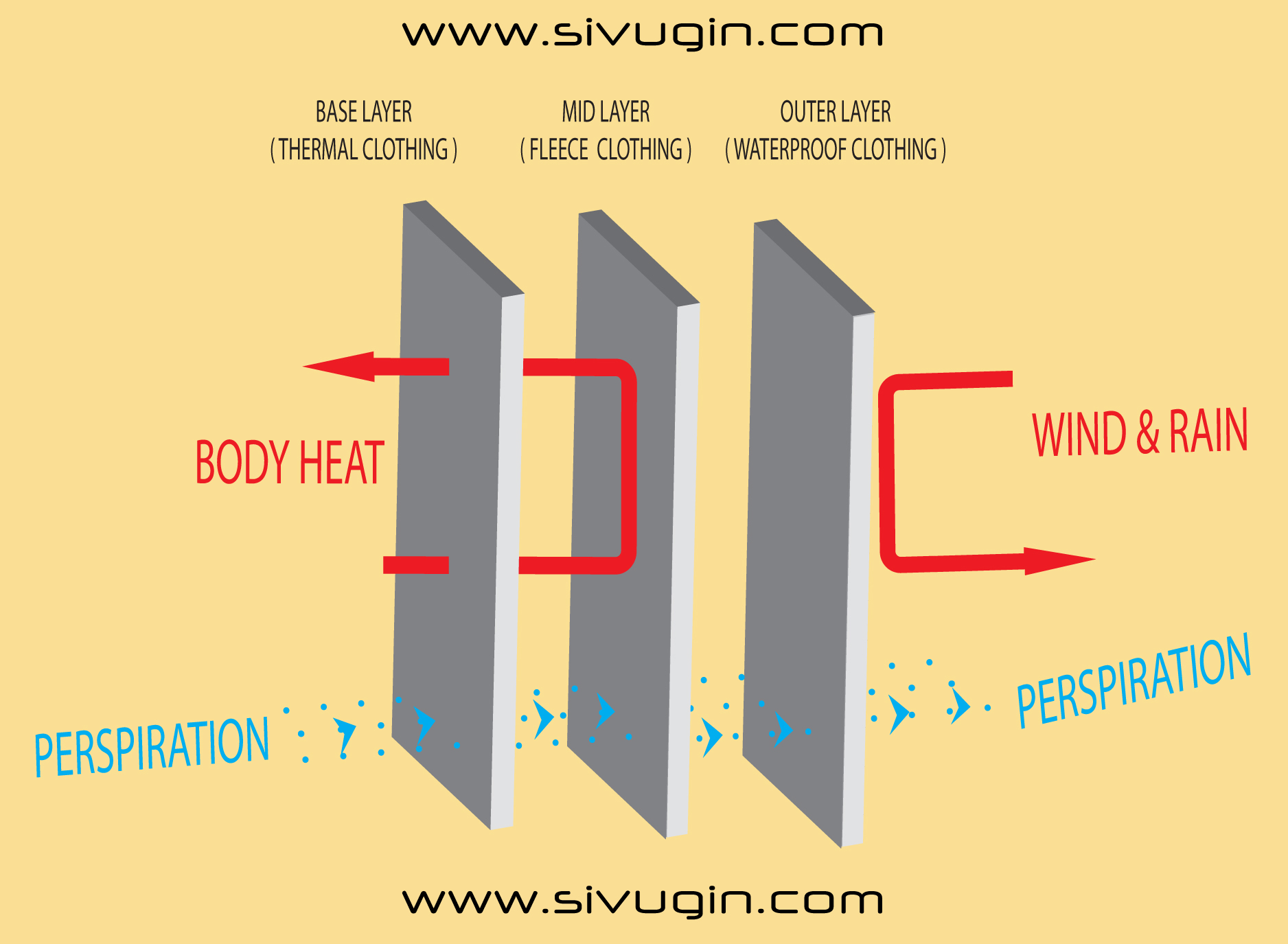Wearing correct layers at the right time is key for being comfortable when you are going outdoors. Outdoor experts are talking about “the layering system” for this subject – but what is it ,exactly ?
“The Layering System” that experts talking about consist of three layers and each layer has a function.
1- The Base Layer ( Moisture Management ) :
It is the layer closest to your skin and manages the moisture
2- The Mid-Layer ( Insulating Layer ) :
It is the layer that keeps you warm
3- The Outer Layer ( Protecting from the elements ) :
It is the layer shields you from wind , rain and snow.
According to weather conditions and type of your activity you should mix and match above layers during your outdoor experience .
In order to understand the logic to do this ,let's go in more details about each layer.
How to choose a base layer :
This layer is worn next to skin and it helps regulate your body temprature by moving perspiration away from your skin ,
by this way you feel dry and comfortable.
Cotton fabrics soak up your sweat during your activity and stay wet .After this your heat draws away from your body and leave you cold.
That’s why they are the most avoided base layer choice for outdoor activities.
Choosing Merino wool or Synthetic Fabrics ( Polyester , Polypropylene ) is a right decision for your comfort and health for base layer.Instead of absorbing moisture;
these fabrics moving moisture away from your skin and dispers it on the outer surface where it can be evaporate.
Base layers can be designed as snug-fitted ( cold conditions ) and loose-fitted ( warmer conditions ) ,
and weight of the materials can be varied according to your activity and weather conditions.
How to choose a mid layer :
This layer is worn over the baselayer and traps body heat in its fibres which keep you warm.
Wool and goose down are very good insulators as a natural fibers. Merino wool sweaters provide reliable warmth and they work as an insulator even when they are wet.
Goose down is best for very cold and dry conditions – they are light and easy compressible .
Disadvantage of goose down is that must be kept dry to maintain its insulating ability.
Fleeces are most common mid layer choice made from synthetic fibers . They are breathable , dry faster and insulate even when wet. According to your activity and weather conditions,
possible to find different weight alternatives . ( You can read more about “fleece weights” in our previous Post )
In general fleeces are more economic and easy-care choice as mid-layer against the alternatives made from natural fibers ( like wool or goose down ) .
How to choose an outer layer :
This layer is worn over the mid layer and protects you against wind and rain. A good outer layer should allow the sweat vapour to pass through and away from the body completely.
According to the weather conditions you can choose :
Waterproof/breathable shells (the most functional ones are these and prefer to have taped seams ,weather protection zips etc. – best for cool and wet conditions and alpine activities)
Water-resistant / breathable shells ( they are less expensive than waterproof ones and can block the wind and light rain )
Softshells (they offer both shell and insulative proporties and also breathability .good option for cold and mild weather conditions ).
Waterproof / non- breathable shells ( they are made from coated nylon and suitable for light activities during the rainy days)
You can have a look some of the examples in Sivugin Outdoor Clothing collection for base, mid and outer layer in the below links.
Base Layer MEN'S PERFORMANCE T-SHIRT
Mid Layer MEN'S 1/4 ZIP TECH FLEECE
Outer LayerMEN'S SOFTSHELL JACKET
